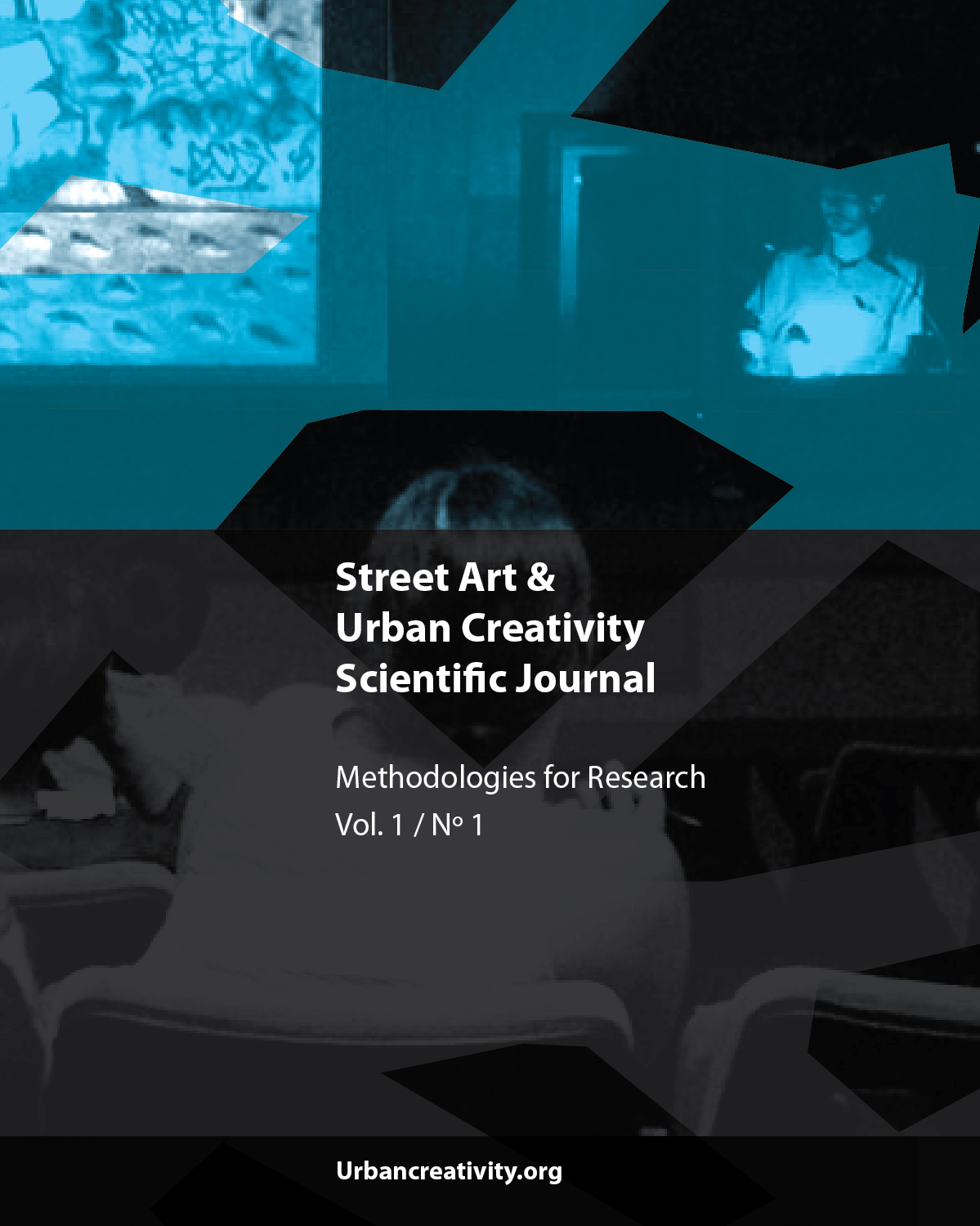Hacia la documentación académica del arte callejero
DOI:
https://doi.org/10.25765/sauc.v1i1.15Resumen
En general, se reconoce que el arte callejero es un arte especialmente efímero. Por ejemplo, los grafitis suelen eliminarse activamente, por lo que a veces sólo existen durante unos días. De lo contrario, se deterioran gradualmente debido a los efectos de la intemperie, o acaban siendo «atravesados» por otros grafitis, de modo que son visibles durante unos pocos años en el mejor de los casos. Por ello, la documentación del arte callejero debe ser de suma importancia para los investigadores. De hecho, se está realizando una gran cantidad de fotografías aparentemente para documentar el arte callejero, tanto para bases de datos de imágenes en Internet como para libros y revistas impresos. Sin embargo, en su mayor parte, este tipo de fotografía de arte callejero no es realizada por (o para) estudiosos, sino más bien por (y para) el público en general. En cualquier caso, esta práctica no suele cumplir ni siquiera los más bajos estándares académicos de documentación. Se puede considerar que se tiene suerte si se encuentra algún metadato de estas imágenes: por ejemplo, el nombre del artista, una ubicación aproximada (normalmente a nivel de ciudad o distrito) o la fecha en la que se tomó la fotografía, si es que se encuentra. Además, la selección de las obras fotografiadas está muy sesgada debido a los gustos personales de los fotógrafos o a la accesibilidad de la obra. Para que la documentación sobre arte callejero sea útil para la investigación, es necesario aportar más datos, como una ubicación más precisa, referencias a otros casos de la misma obra y las dimensiones de la misma. En este artículo se examina el inadecuado estado actual de la documentación en la investigación del arte callejero y se presenta un modelo para la documentación en línea de los grafitis con plantillas que demuestra la viabilidad de algunos de estos requisitos.
Descargas
Estadísticas globales ℹ️
|
208
Visualizaciones
|
86
Descargas
|
|
294
Total
|
|
Descargas
Publicado
Cómo citar
Número
Sección
Licencia
Derechos de autor 2015 Street Art & Urban Creativity

Esta obra está bajo una licencia internacional Creative Commons Atribución-SinDerivadas 4.0.
Los autores/as que publiquen en esta revista aceptan las siguientes condiciones:
- Los autores/as conservan los derechos de autor.
- Los autores/as ceden a la revista el derecho de la primera publicación. La revista también posee los derechos de edición.
- Todos los contenidos publicados se regulan mediante una Licencia Atribución/Reconocimiento-SinDerivados 4.0 Internacional. Acceda a la versión informativa y texto legal de la licencia. En virtud de ello, se permite a terceros utilizar lo publicado siempre que mencionen la autoría del trabajo y a la primera publicación en esta revista. Si transforma el material, no podrá distribuir el trabajo modificado.
- Los autores/as pueden realizar otros acuerdos contractuales independientes y adicionales para la distribución no exclusiva de la versión del artículo publicado en esta revista (p. ej., incluirlo en un repositorio institucional o publicarlo en un libro) siempre que indiquen claramente que el trabajo se publicó por primera vez en esta revista.
- Se permite y recomienda a los autores/as a publicar su trabajo en Internet (por ejemplo en páginas institucionales o personales), una vez publicado en la revista y citando a la misma ya que puede conducir a intercambios productivos y a una mayor y más rápida difusión del trabajo publicado (vea The Effect of Open Access).













